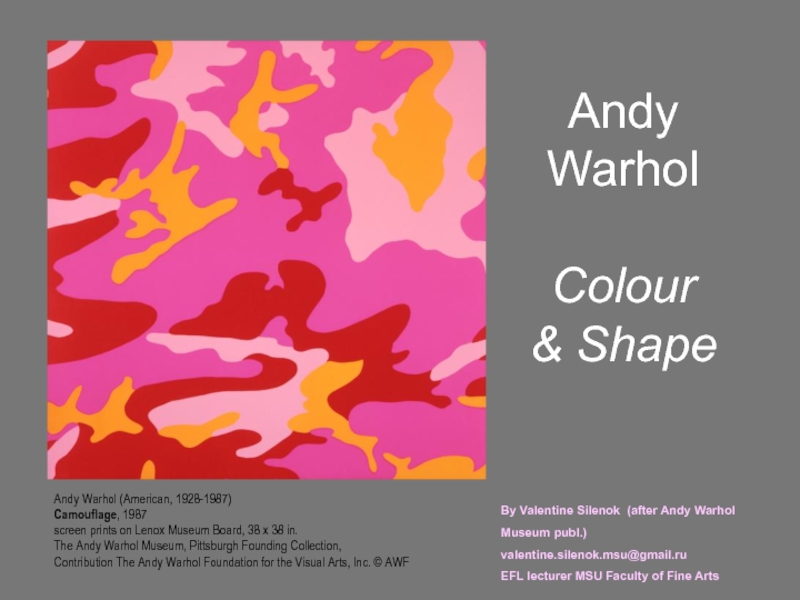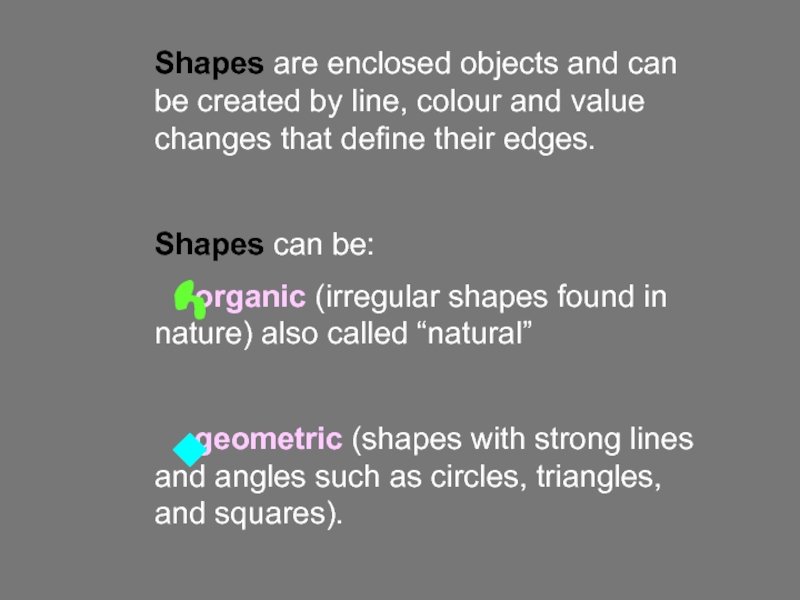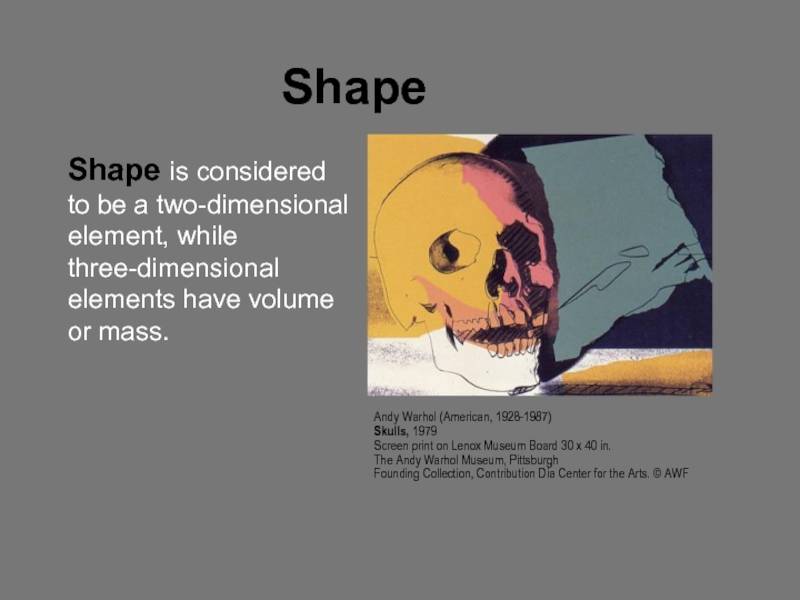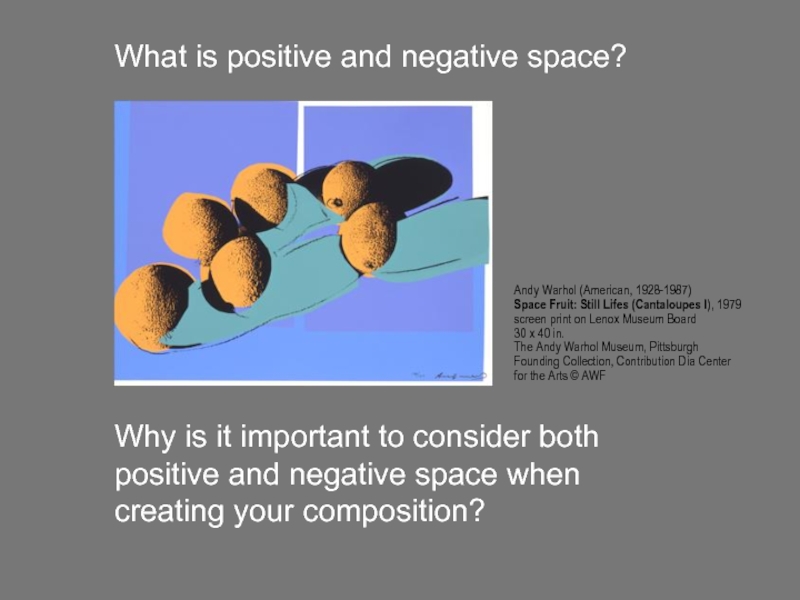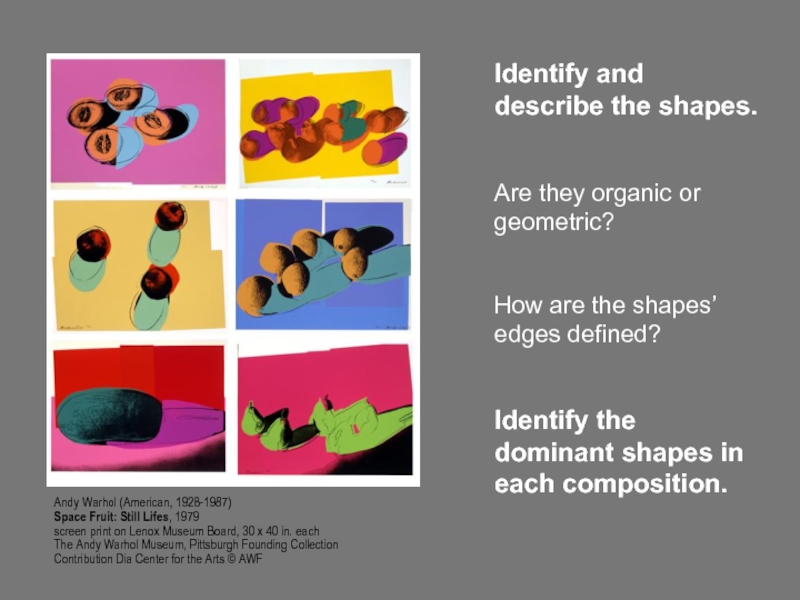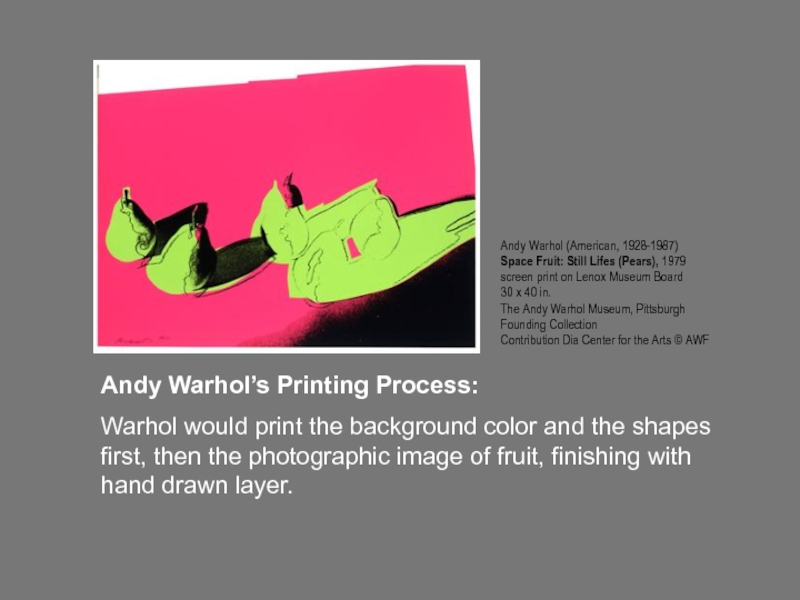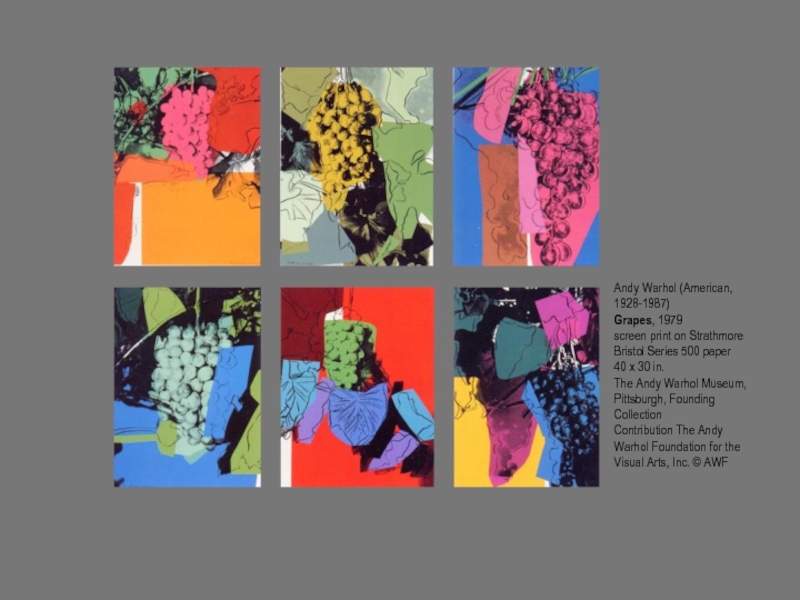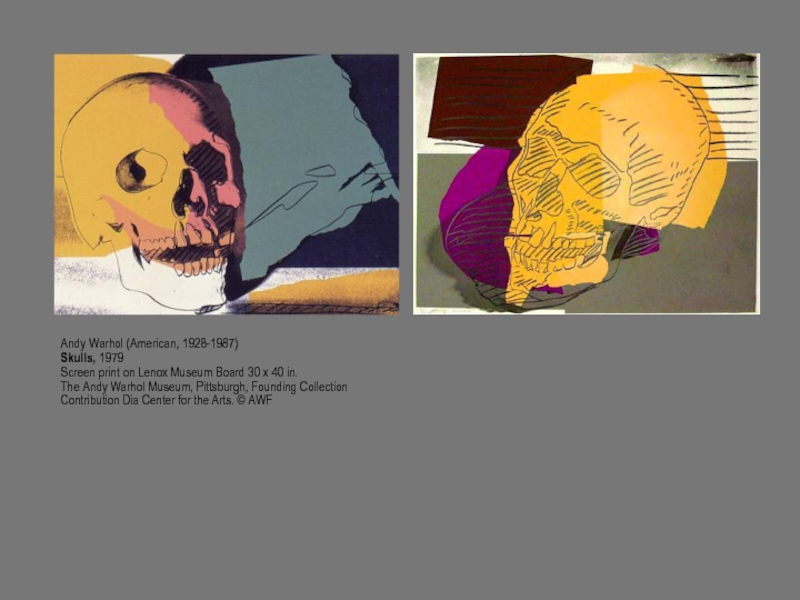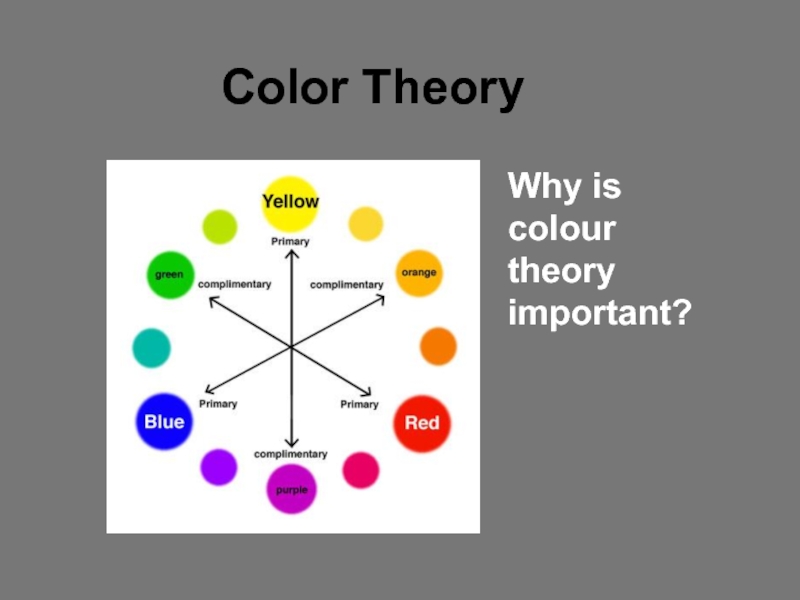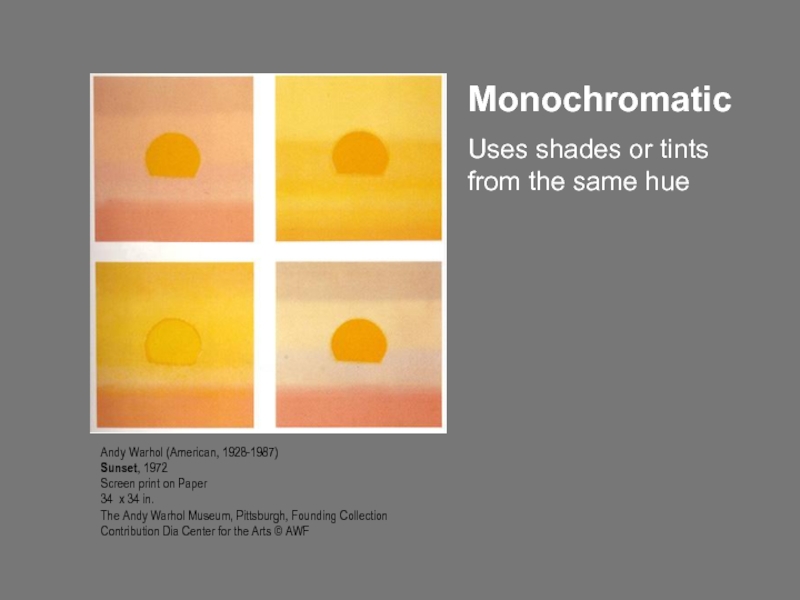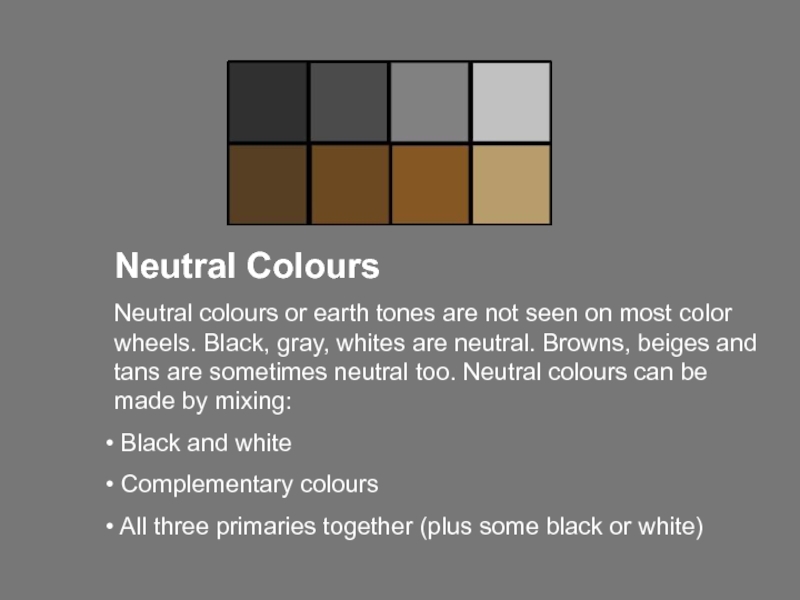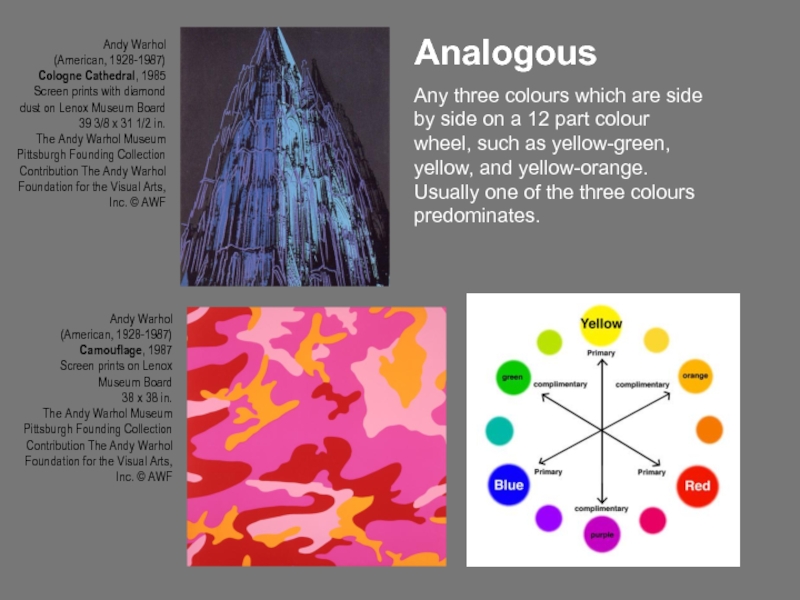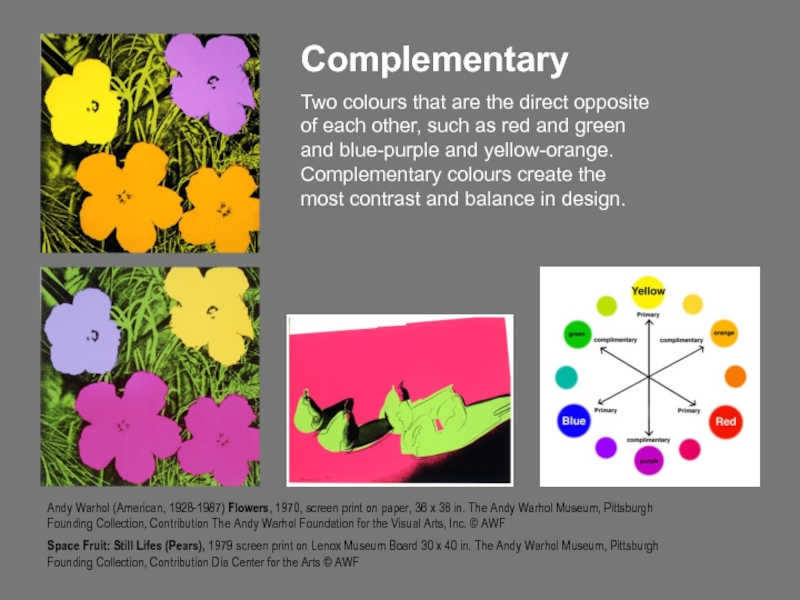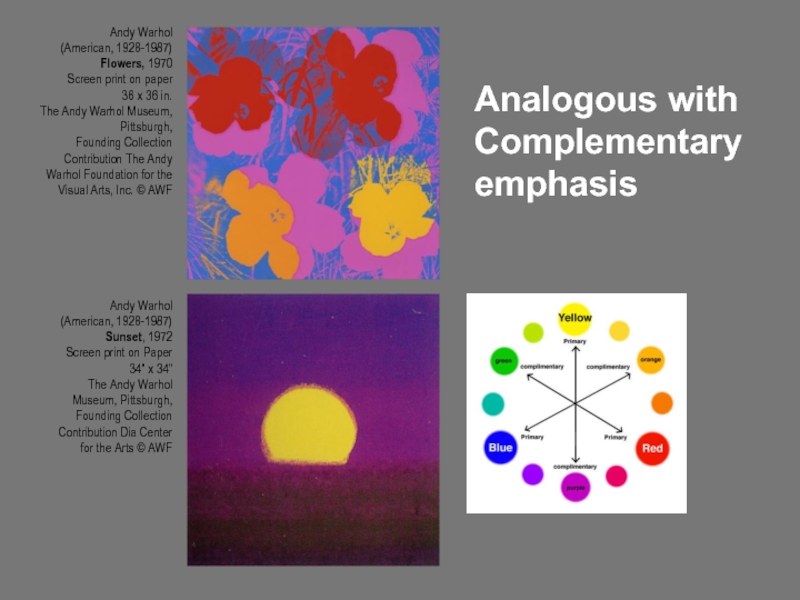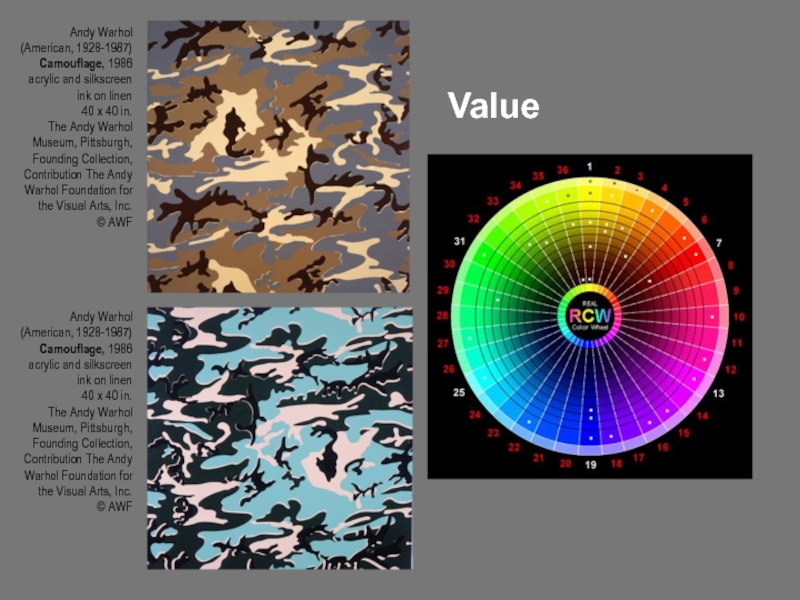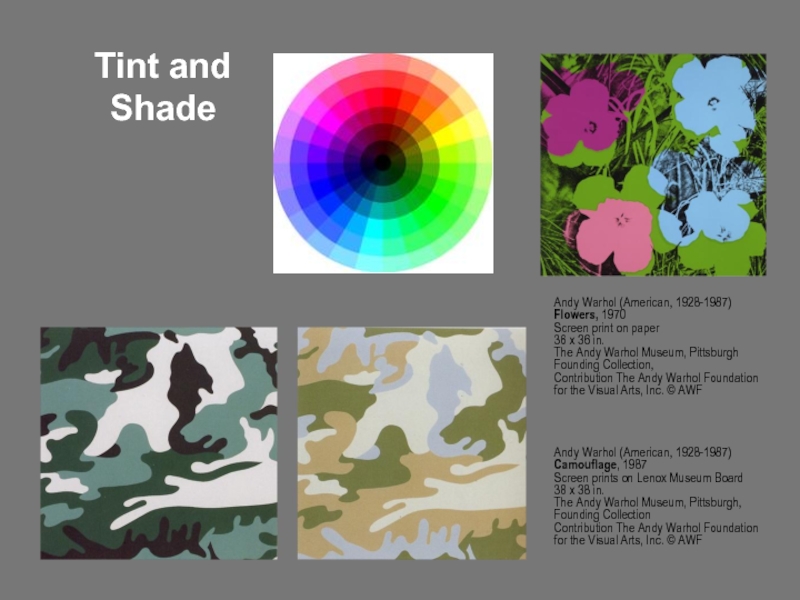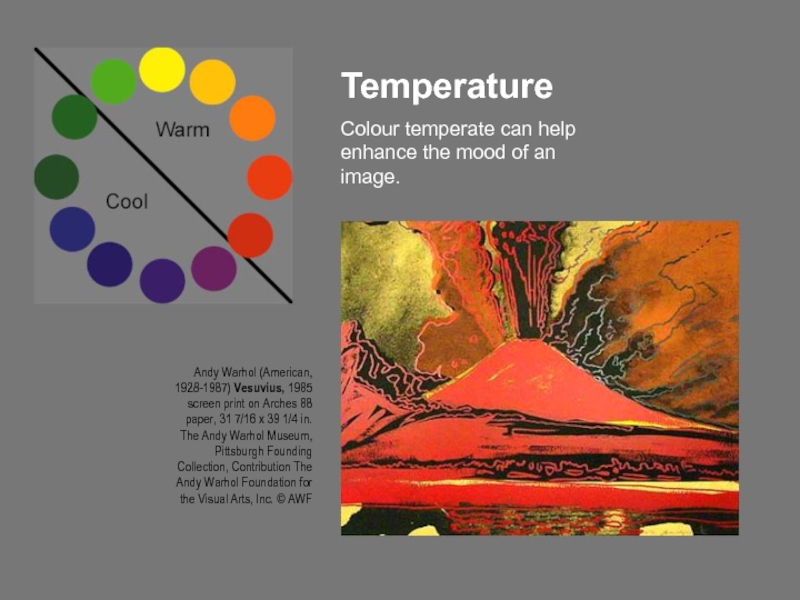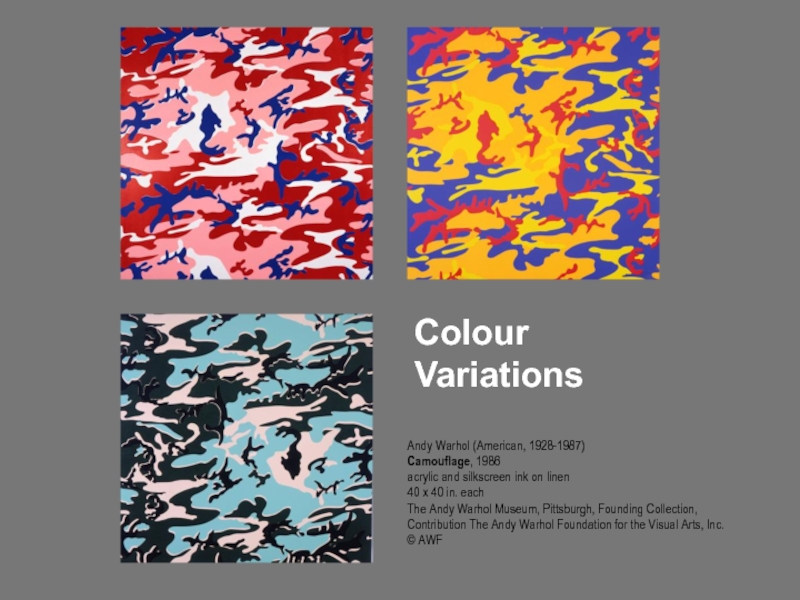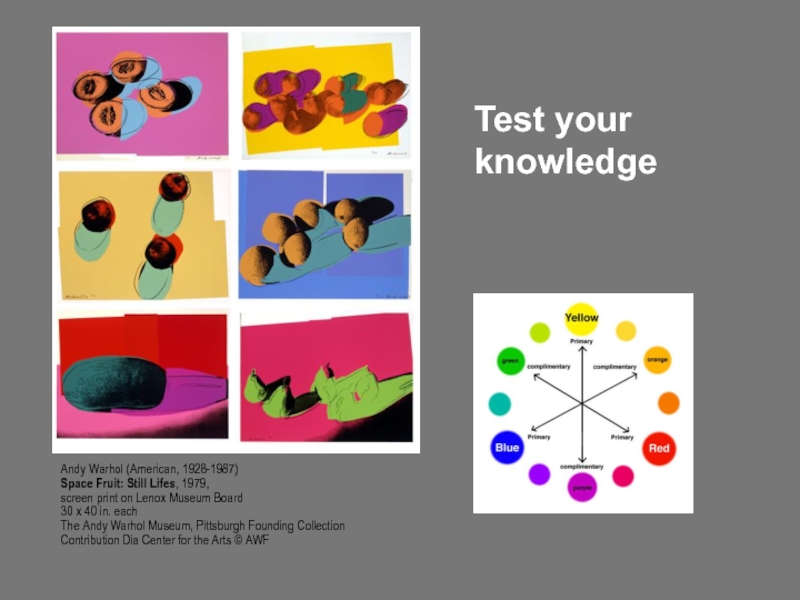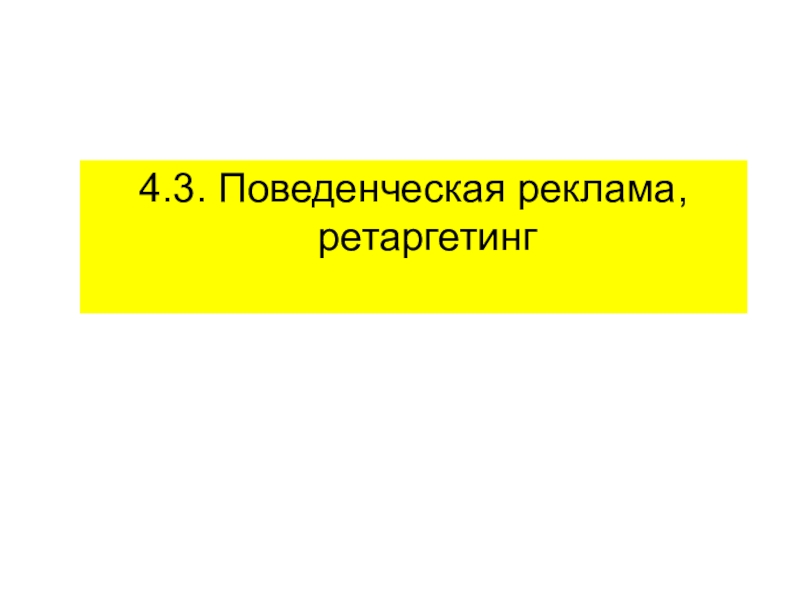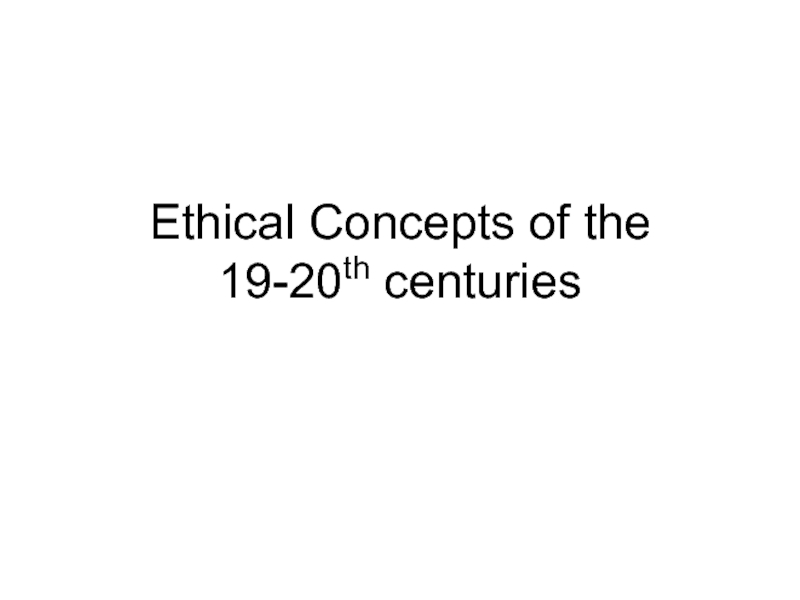Слайд 1Andy Warhol
Colour
& Shape
Andy Warhol (American, 1928-1987)
Camouflage, 1987
screen prints
on Lenox Museum Board, 38 x 38 in.
The Andy
Warhol Museum, Pittsburgh Founding Collection,
Contribution The Andy Warhol Foundation for the Visual Arts, Inc. © AWF
By Valentine Silenok (after Andy Warhol Museum publ.) valentine.silenok.msu@gmail.ru EFL lecturer MSU Faculty of Fine Arts
Слайд 2Shapes are enclosed objects and can be created by line,
colour and value changes that define their edges.
Shapes can be:
organic (irregular shapes found in nature) also called “natural”
geometric (shapes with strong lines and angles such as circles, triangles, and squares).
Слайд 3Shape is considered to be a two-dimensional element, while three-dimensional
elements have volume or mass.
Shape
Andy Warhol (American, 1928-1987)
Skulls, 1979
Screen print on Lenox Museum Board 30 x 40 in.
The Andy Warhol Museum, Pittsburgh
Founding Collection, Contribution Dia Center for the Arts. © AWF
Слайд 4Why is it important to consider both positive and negative
space when creating your composition?
Andy Warhol (American, 1928-1987)
Space Fruit:
Still Lifes (Cantaloupes I), 1979
screen print on Lenox Museum Board
30 x 40 in.
The Andy Warhol Museum, Pittsburgh Founding Collection, Contribution Dia Center for the Arts © AWF
What is positive and negative space?
Слайд 5Identify and describe the shapes.
Are they organic or geometric?
How are
the shapes’ edges defined?
Identify the dominant shapes in each composition.
Andy
Warhol (American, 1928-1987)
Space Fruit: Still Lifes, 1979
screen print on Lenox Museum Board, 30 x 40 in. each
The Andy Warhol Museum, Pittsburgh Founding Collection
Contribution Dia Center for the Arts © AWF
Слайд 6Andy Warhol’s Printing Process:
Warhol would print the background color and
the shapes first, then the photographic image of fruit, finishing
with hand drawn layer.
Andy Warhol (American, 1928-1987)
Space Fruit: Still Lifes (Pears), 1979
screen print on Lenox Museum Board
30 x 40 in.
The Andy Warhol Museum, Pittsburgh Founding Collection
Contribution Dia Center for the Arts © AWF
Слайд 7Andy Warhol (American, 1928-1987)
Grapes, 1979
screen print on Strathmore Bristol
Series 500 paper
40 x 30 in.
The Andy Warhol
Museum, Pittsburgh, Founding Collection
Contribution The Andy Warhol Foundation for the Visual Arts, Inc. © AWF
Слайд 8Andy Warhol (American, 1928-1987)
Skulls, 1979
Screen print on Lenox Museum
Board 30 x 40 in.
The Andy Warhol Museum, Pittsburgh,
Founding Collection
Contribution Dia Center for the Arts. © AWF
Слайд 9Color Theory
Why is colour theory important?
Слайд 10Monochromatic
Uses shades or tints from the same hue
Andy Warhol (American,
1928-1987)
Sunset, 1972
Screen print on Paper
34 x 34 in.
The
Andy Warhol Museum, Pittsburgh, Founding Collection Contribution Dia Center for the Arts © AWF
Слайд 11Neutral Colours
Neutral colours or earth tones are not seen on
most color wheels. Black, gray, whites are neutral. Browns, beiges
and tans are sometimes neutral too. Neutral colours can be made by mixing:
Black and white
Complementary colours
All three primaries together (plus some black or white)
Слайд 12Analogous
Any three colours which are side by side on a
12 part colour wheel, such as yellow-green, yellow, and yellow-orange.
Usually one of the three colours predominates.
Andy Warhol
(American, 1928-1987)
Camouflage, 1987
Screen prints on Lenox Museum Board
38 x 38 in.
The Andy Warhol Museum
Pittsburgh Founding Collection
Contribution The Andy Warhol Foundation for the Visual Arts, Inc. © AWF
Andy Warhol
(American, 1928-1987)
Cologne Cathedral, 1985
Screen prints with diamond dust on Lenox Museum Board
39 3/8 x 31 1/2 in.
The Andy Warhol Museum
Pittsburgh Founding Collection
Contribution The Andy Warhol Foundation for the Visual Arts, Inc. © AWF
Слайд 13Complementary
Two colours that are the direct opposite of each other,
such as red and green and blue-purple and yellow-orange. Complementary
colours create the most contrast and balance in design.
Andy Warhol (American, 1928-1987) Flowers, 1970, screen print on paper, 36 x 36 in. The Andy Warhol Museum, Pittsburgh Founding Collection, Contribution The Andy Warhol Foundation for the Visual Arts, Inc. © AWF
Space Fruit: Still Lifes (Pears), 1979 screen print on Lenox Museum Board 30 x 40 in. The Andy Warhol Museum, Pittsburgh Founding Collection, Contribution Dia Center for the Arts © AWF
Слайд 14Analogous with Complementary emphasis
Andy Warhol
(American, 1928-1987)
Flowers, 1970
Screen
print on paper
36 x 36 in.
The Andy Warhol
Museum, Pittsburgh,
Founding Collection
Contribution The Andy Warhol Foundation for the Visual Arts, Inc. © AWF
Andy Warhol
(American, 1928-1987)
Sunset, 1972
Screen print on Paper
34” x 34”
The Andy Warhol Museum, Pittsburgh,
Founding Collection Contribution Dia Center for the Arts © AWF
Слайд 15Value
Andy Warhol
(American, 1928-1987)
Camouflage, 1986 acrylic and silkscreen
ink
on linen
40 x 40 in.
The Andy Warhol Museum,
Pittsburgh, Founding Collection,
Contribution The Andy Warhol Foundation for the Visual Arts, Inc.
© AWF
Andy Warhol
(American, 1928-1987)
Camouflage, 1986 acrylic and silkscreen
ink on linen
40 x 40 in.
The Andy Warhol Museum, Pittsburgh, Founding Collection,
Contribution The Andy Warhol Foundation for the Visual Arts, Inc.
© AWF
Слайд 16Tint and Shade
Andy Warhol (American, 1928-1987)
Flowers, 1970
Screen print
on paper
36 x 36 in.
The Andy Warhol Museum,
Pittsburgh Founding Collection,
Contribution The Andy Warhol Foundation for the Visual Arts, Inc. © AWF
Andy Warhol (American, 1928-1987)
Camouflage, 1987
Screen prints on Lenox Museum Board
38 x 38 in.
The Andy Warhol Museum, Pittsburgh, Founding Collection
Contribution The Andy Warhol Foundation for the Visual Arts, Inc. © AWF
Слайд 17Temperature
Colour temperate can help enhance the mood of an image.
Andy
Warhol (American, 1928-1987) Vesuvius, 1985 screen print on Arches 88
paper, 31 7/16 x 39 1/4 in. The Andy Warhol Museum, Pittsburgh Founding Collection, Contribution The Andy Warhol Foundation for the Visual Arts, Inc. © AWF
Слайд 18Colour Variations
Andy Warhol (American, 1928-1987)
Camouflage, 1986
acrylic and silkscreen ink
on linen
40 x 40 in. each
The Andy Warhol Museum,
Pittsburgh, Founding Collection,
Contribution The Andy Warhol Foundation for the Visual Arts, Inc.
© AWF
Слайд 19Test your knowledge
Andy Warhol (American, 1928-1987)
Space Fruit: Still Lifes,
1979,
screen print on Lenox Museum Board
30 x 40 in.
each
The Andy Warhol Museum, Pittsburgh Founding Collection
Contribution Dia Center for the Arts © AWF
